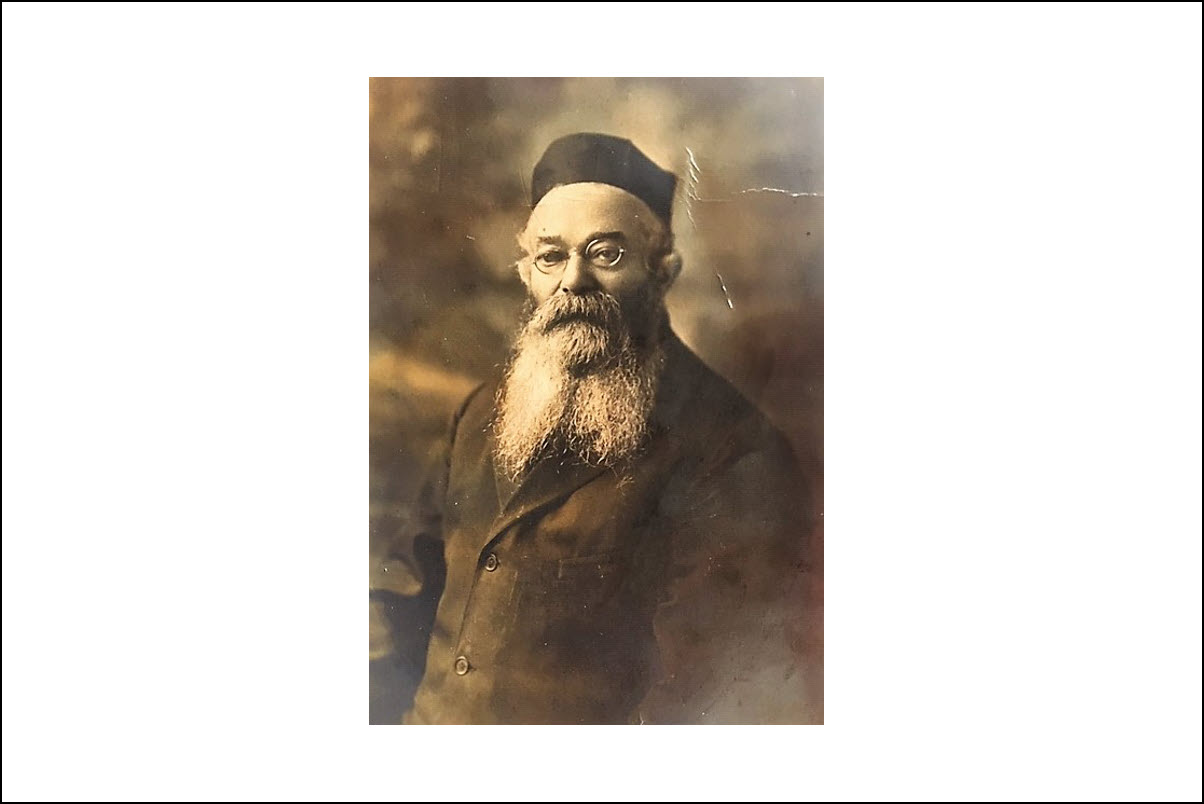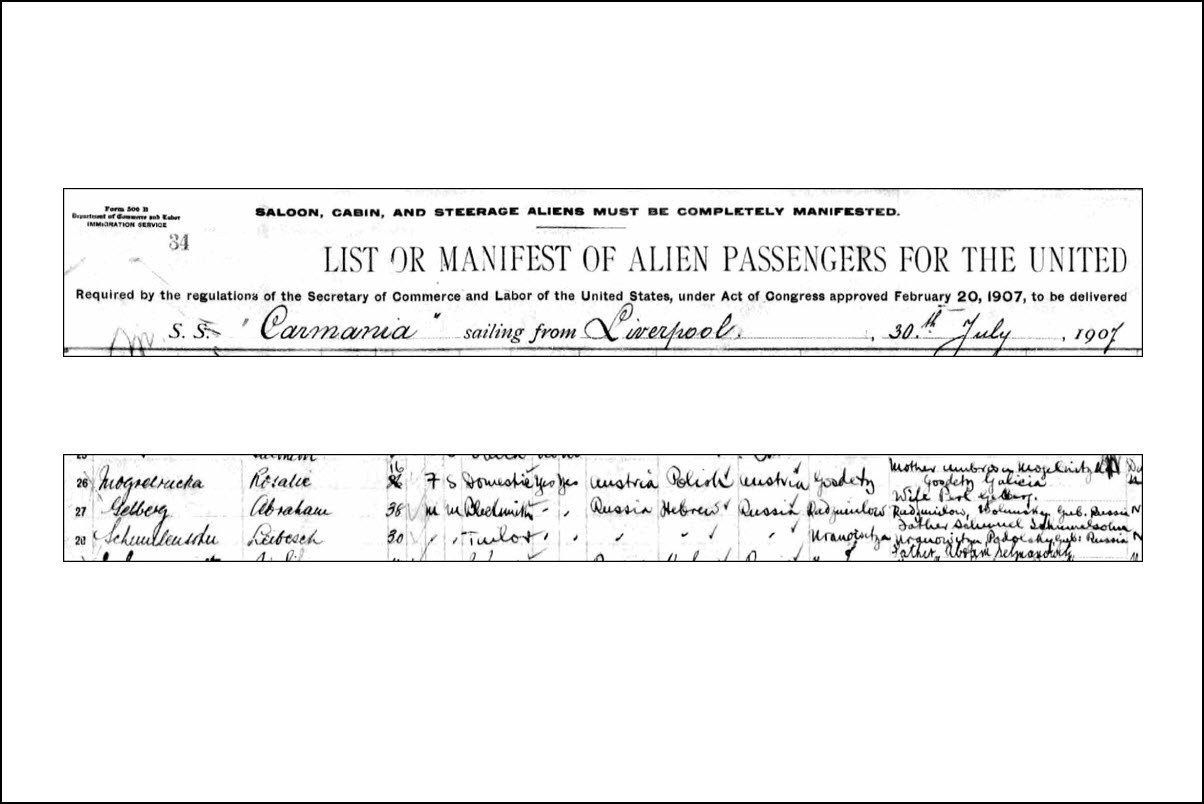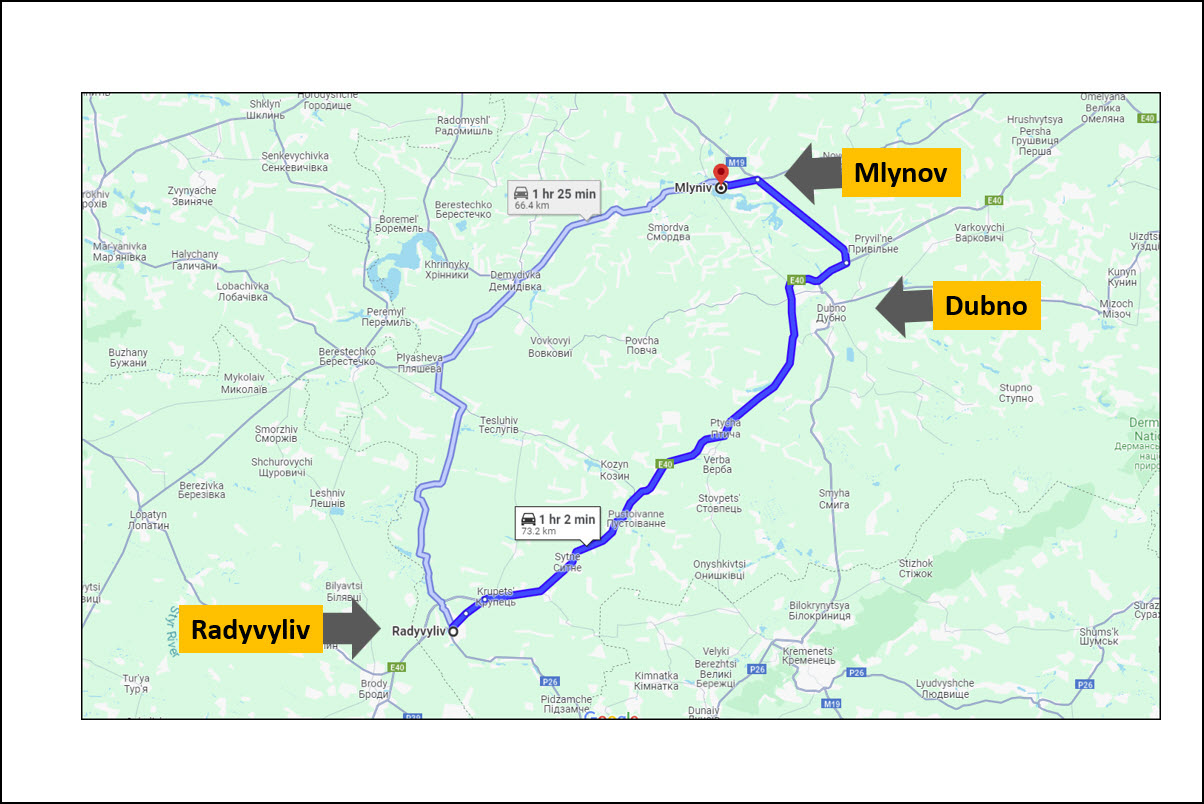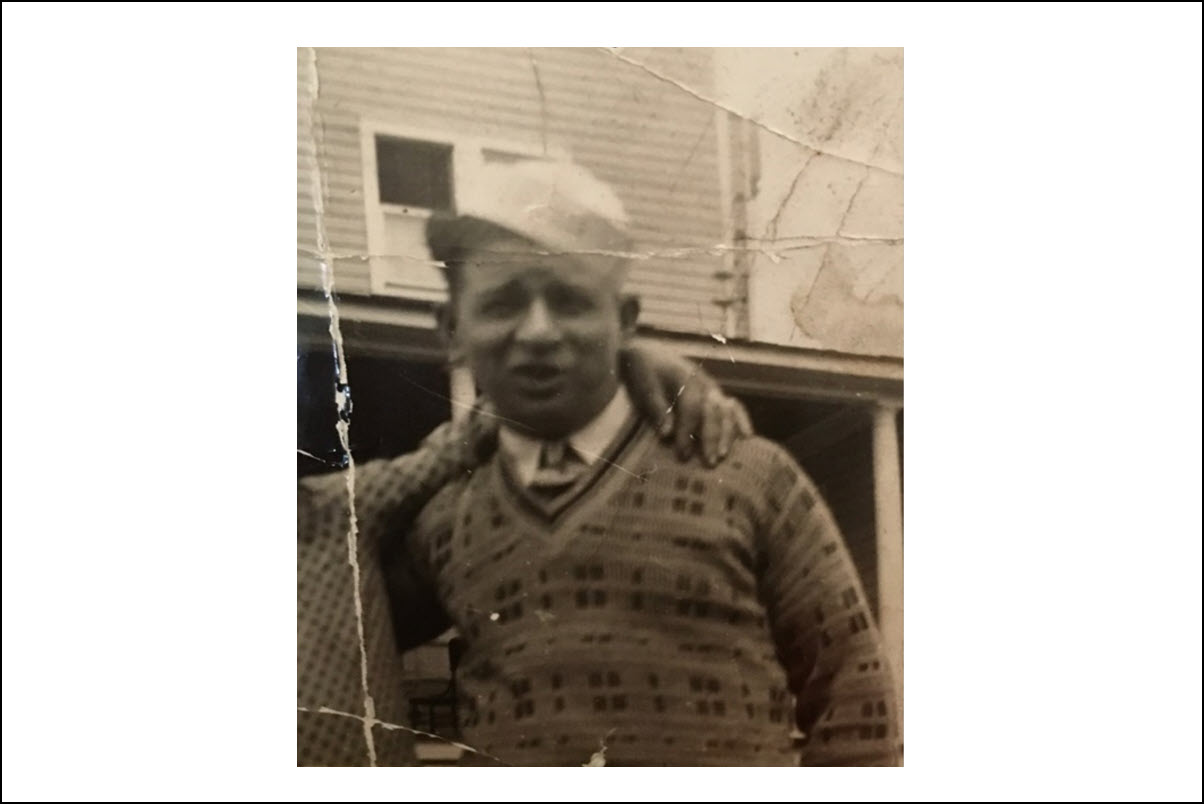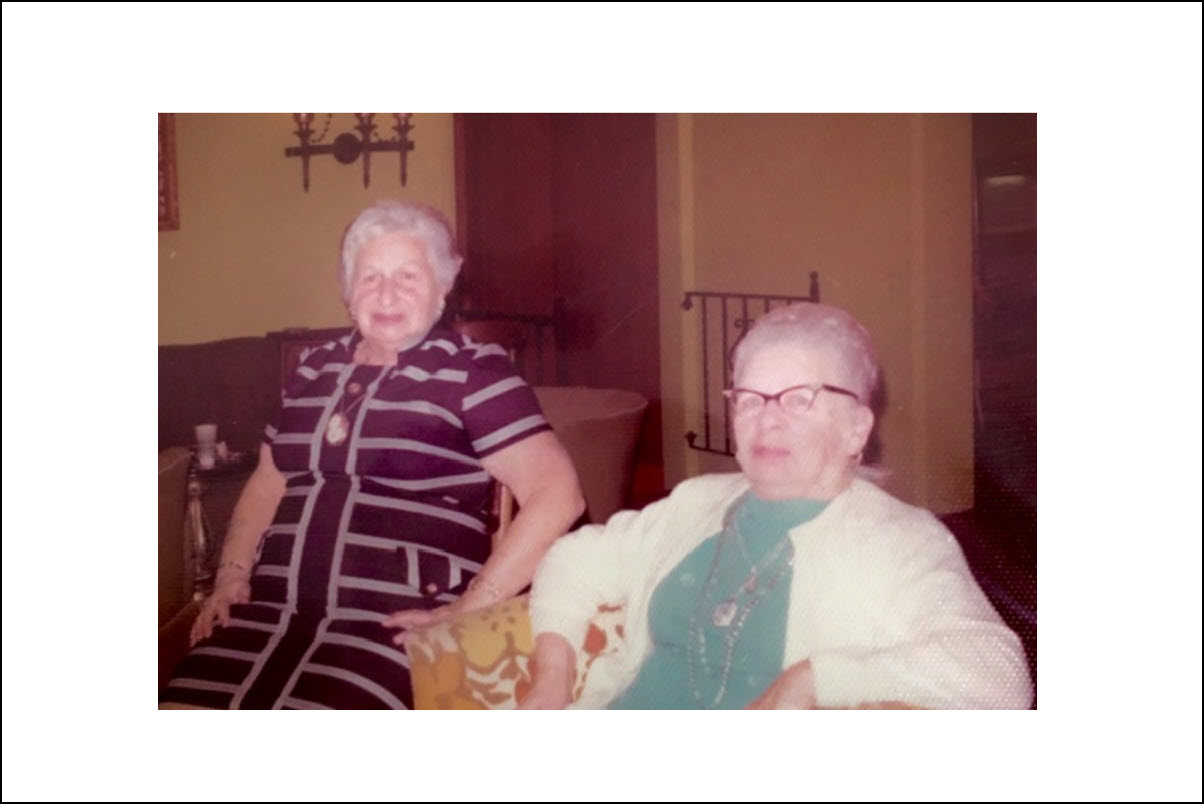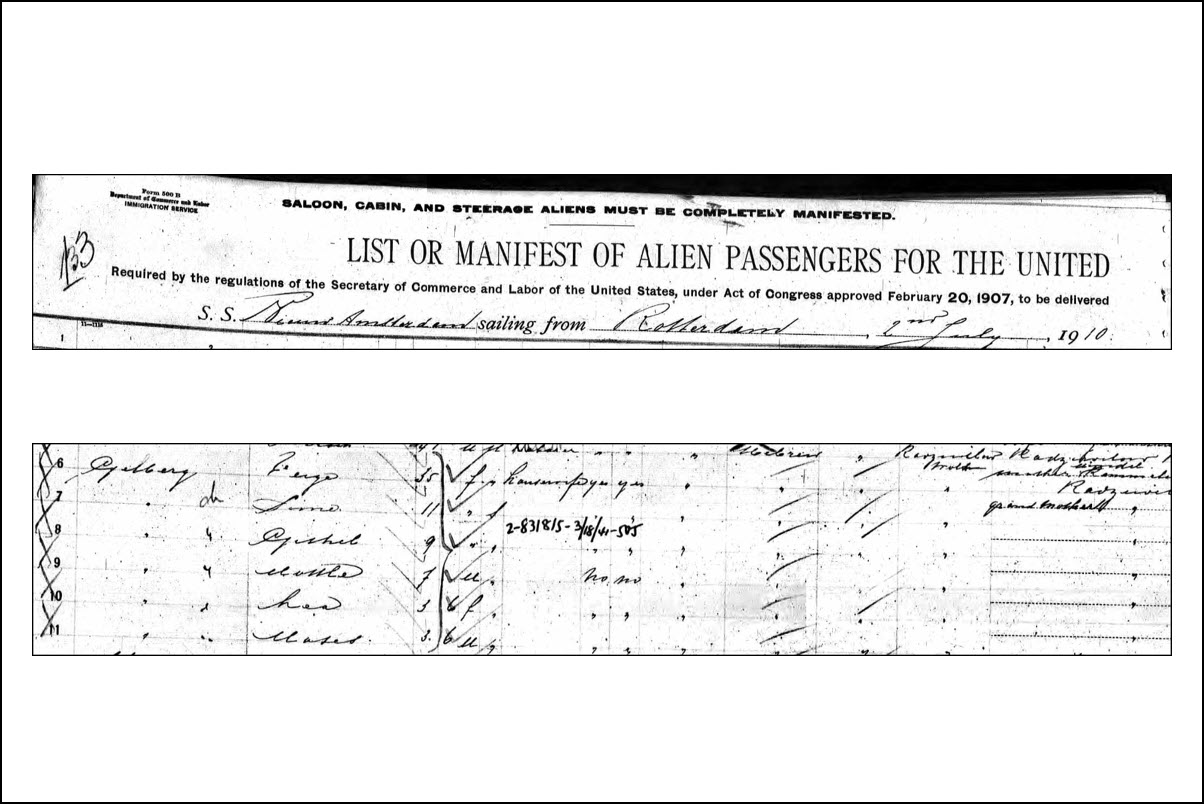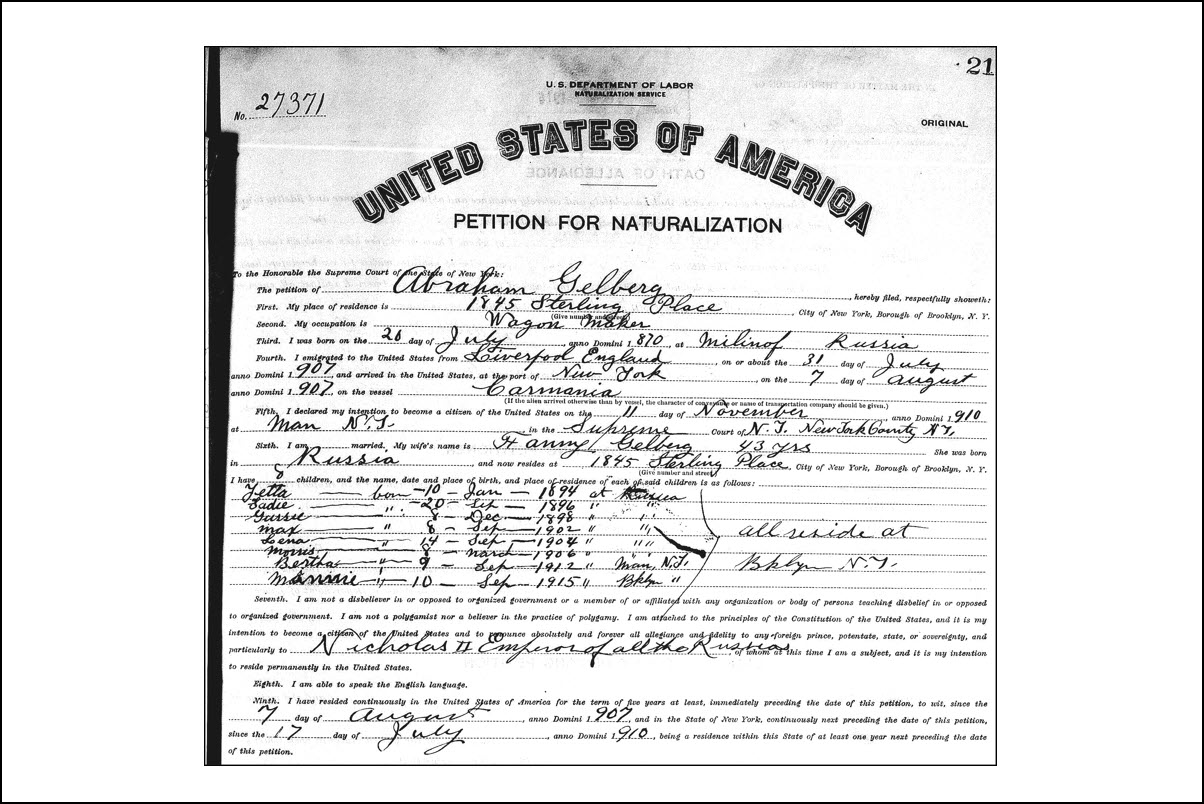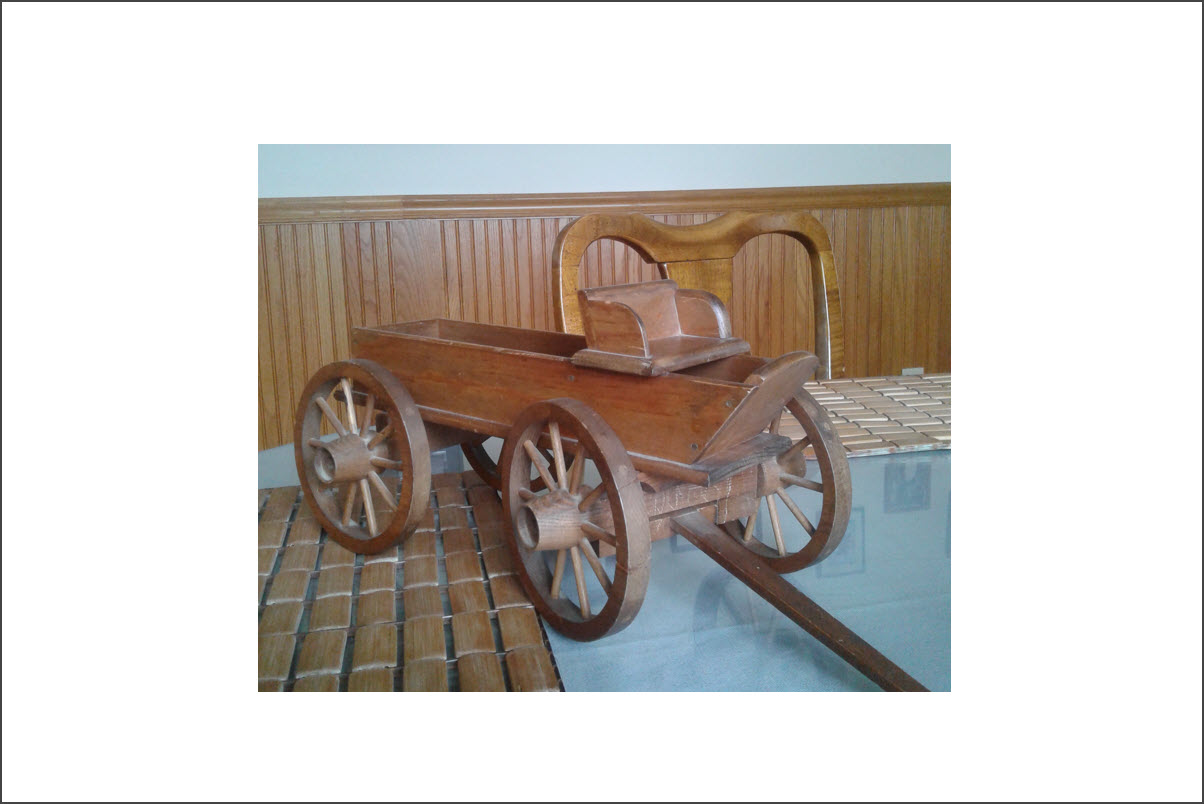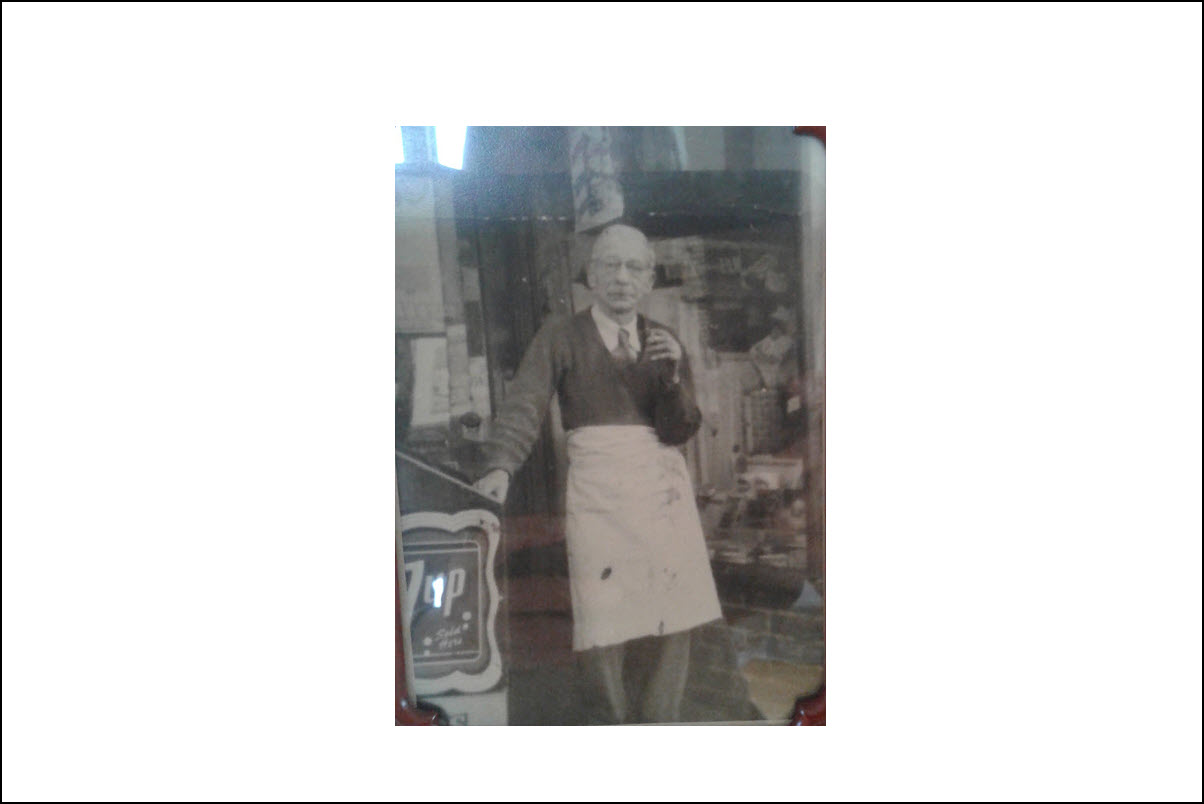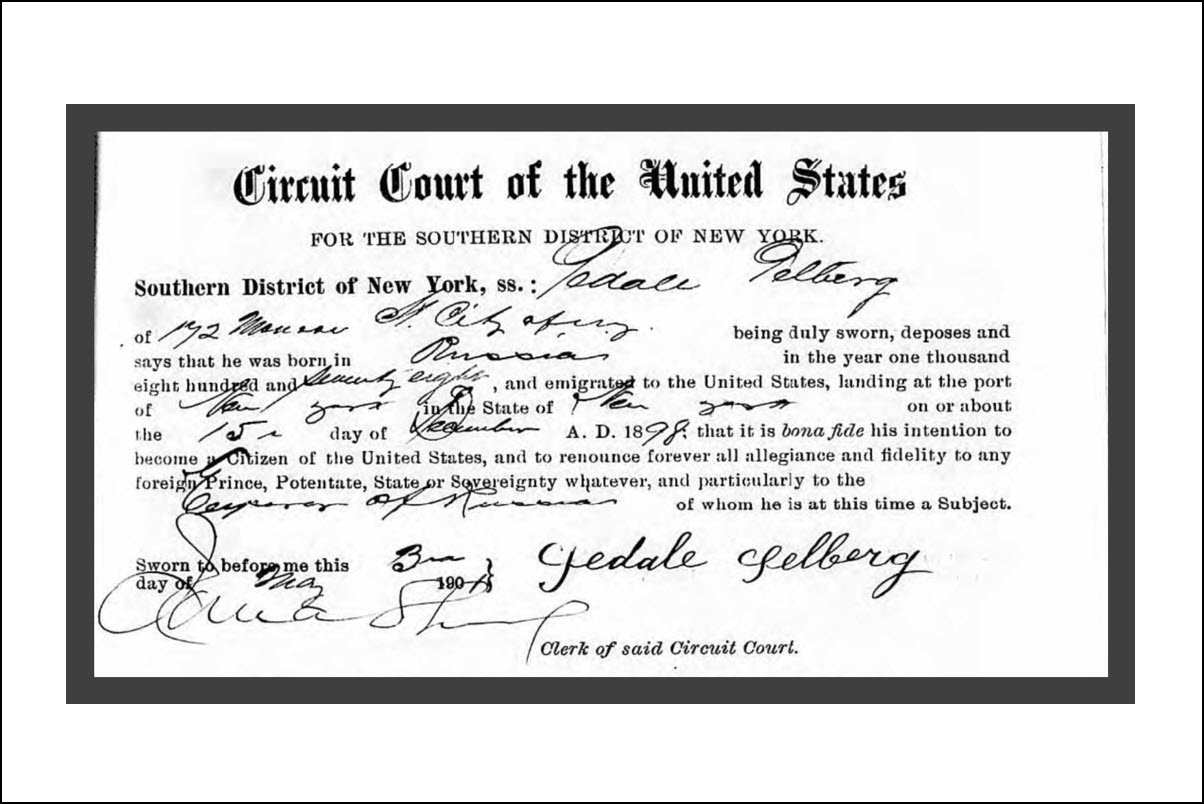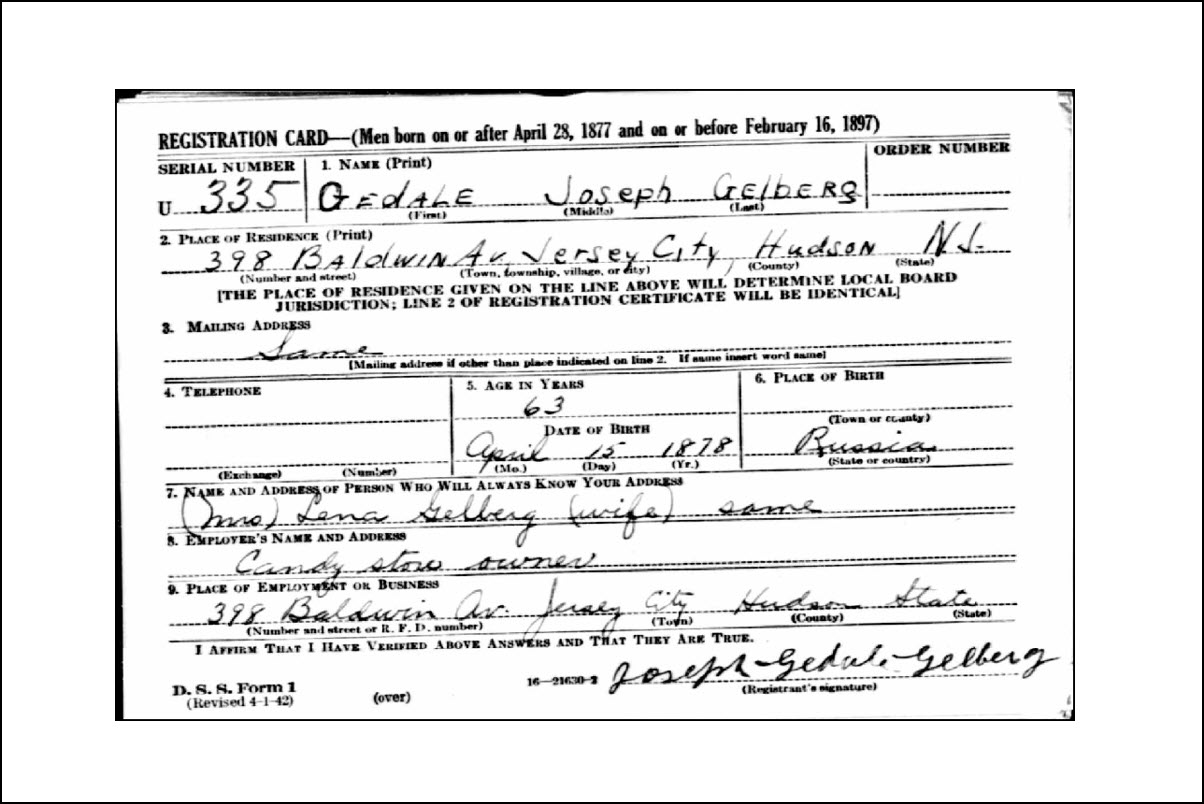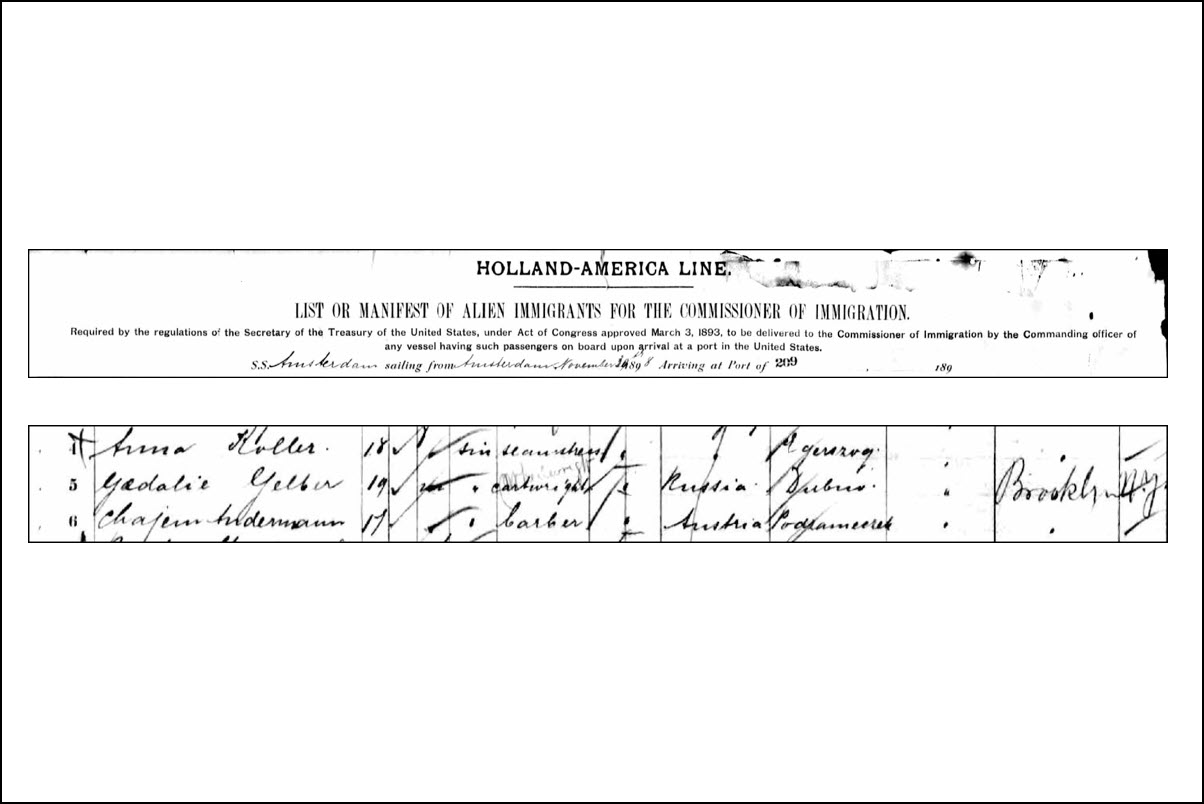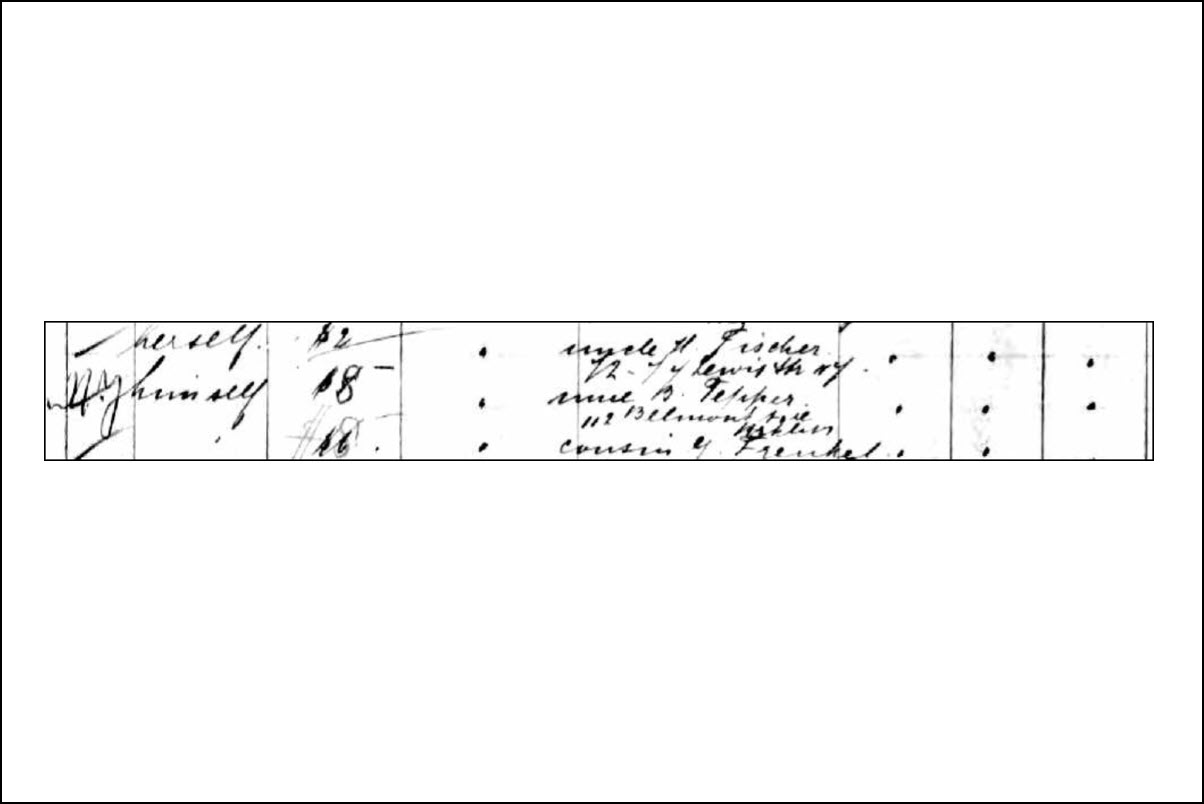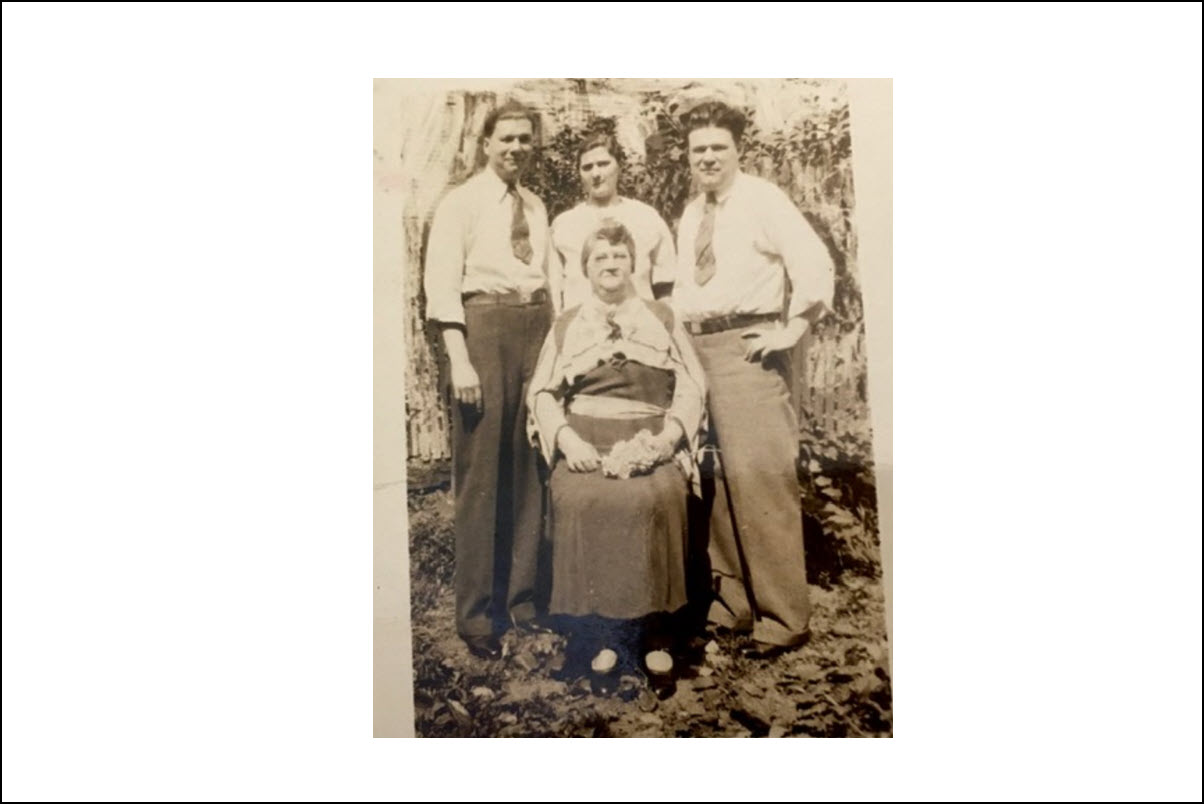-
Home
Home About Network
- History
Nostalgia and Memory The Polish Period I The Russian Period I WWI Interwar Poland WWII | Shoah 1944 Memorial Commemoration- People
Famous Descendants Families from Mlynov Ancestors By Birthdates- Memories
The Family of Pinchus Meir Gelberg From Mlynov 
***
[continued from the overview...]
Pinchus Meir Gelberg
As discussed, the ancestor of this Gelberg line appears to be the man listed as "Pinhos-Meer" Gelbarg in household #26 in the 1850 Russian revision list. In that record, Pinchos-Meer is age 21 with an implied birth year of 1829. The revision indicates that he was present in Mlynov when an earlier 1834 revision was conducted. It seems likely he was born in Mlynov.
In the household with Pinhos-Meer is his father, Ios Fayvish, age 46, who is head of the family, and by implication was born in 1804, as well as Ios's wife "Henya" age 25. It appears Henya is a second, younger wife since she is not old enough to be the mother of Pinhos-Meer, age 21, or his sisters, Hana and Sura, who are listed as 18 and 15 respectively.
By the subsequent 1858 revision, Pinchas-Meer (listed in household #29) is 29 years old, has married a woman named "Sima" (who is remembered by descendants as "Sadie") and has a daughter Gitlya who is age 4. [We can speculate that Gitlya was named for Pinchas-Meer's mother, the first wife of his father, Ios Fayvish, who perhaps passed away].
In the 1858 revision, Pinchas-Meer is still living in his father's home. Ios Fayvish is still head of the household now age 54. He is still married to his second wife, "Genya" (called Henya in the 1850 census), now age 33. They have three daughters (ages 6, 4, and 1) who were born in the intervening years and are likely half siblings of Pinchas-Meer.
Another son of Ios-Fayvish named Duvid-Morko is also listed. The record indicates he died in 1856 at the age of 14. He did not appear in the 1850 census when he would have been 9 years old and perhaps was in hiding to avoid conscription. Based on his birth year (1842), it seems likely he may have been a son of Ios Fayvish's first wife and a full sibling of Pinchas-Meer.
It seems possible, even probable, that Ios (who was born in 1804 and was the father of Pinchus Meir), was a brother or cousin of the man named Haim Leib Gelberg who was head of the other Gelberg household in these revisions (see household #48 in 1850 and household #54 in 1858). Haim Leib was the man who died in 1855 leaving behind an orphan, who I suspect was later called Labish (Leib's son) Gelberg, the ancestor of the Goldberg line. If this reconstruction is possible, then Labish Gelberg and Pinchus Meir Gelberg were cousins and the Gelberg and Goldberg lines are related.
***
The Four Gelberg Brothers
On December 23, 1911, "Nussen Gilberg" from Mlynov arrived in New York and was heading to his son Gershen. Traveling with him was his daughter "Sima" (Sarah) and their manifest indicates that Nathan's wife "Reise" was still back in Mlynov. Nathan and his daughter were traveling for fifteen days on the SS Grant from Hamburg, the same ship taken by Mlynov-born Moishe Gilberg, the first immigrant to New York from what became the Goldberg line.
The discovery of Nussen and Sima's passenger manifest provided the first clue to the presence of the three Gelberg brothers who were born in Mlynov and who had come to the US and settled initially in Jersey City. We shall see that there was a fourth Gelberg brother in this family, who remained back in Mlynov and who is mentioned as a well-to-do person in two of the narratives of the Mlynov-Muravica Memorial Book.
Nussen, or Nathan as he was soon to be, was the first of the Gelberg brothers I found but he was not the first to arrive. After digging into his records, I tracked down one of his great-granddaughters, Amy Westpy, and with the help of her knowledge managed to begin piecing together the Gelberg family story.
When I first approached her, Amy was not certain her great-grandfather, Nathan, was from the same Mlynov town I was researching. "There are two Mlynovs," she said to me, "And I'm not sure which one they were from." There is in fact another Mlynov that is now in Poland, and not in Ukraine where our families' Mlynov (now called Mlyniv) is now located. The records, however, eventually confirmed that her Gelberg family was from the district of "Volyn" and that meant we were talking about one and the same Mlynov. Our Mlynov became part of Russia in 1793 with the Second Partition of Poland and returned to Poland only after WWI when Poland was recreated. When Nathan and Sima left Mlynov in 1911, it was still part of Russia.
From Amy, I learned that her great-grandfather, Nathan Gelberg, had a brother named Abraham Gelberg. My hunt in the records would turn up another brother, Joseph (Gedale) Gelberg, who was the first of the brothers to arrive in the US. One thing led to another and I eventually tracked down and connected to Joseph Gelberg's granddaughter, Denise Gelberg, a writer now living in Ithaca upstate New York.
One of my great pleasures was getting to introduce third cousins, Amy and Denise, who discovered they had common childhood memories of family gatherings in the Catskills. What follows is the story of this Gelberg line from Mlynov as best as I can reconstruct it. If you prefer, you can read download the longer version here.
***
Nathan Gelberg and his wife Reisel
Nathan Gelberg, born in about 1858 in Mlynov, was the oldest of at least four Gelberg brothers, all of whom we will meet below. Nathan's seven children were also born in Mlynov. He wrote their names on his Petition for Naturalization in the US on June 23, 1927. By this point, six of his seven children had arrived in the US as well. The children's names were David (1884), Sima (Sarah Epstein) (1886–?), Morris (1895–1965), Gussie (Gertrude Miller) (1893–1976), Gershen (Jack) (1895–1928), Chane (Anna Curtiss) (1897–?) and Sadi (Hirsch) (1897–?).
Only Nathan's oldest son, David Gelberg, stayed in Russia. Amy tells me that there were oral traditions in her family that David may have had a deformity that may have prevented his immigration with the rest of his siblings, though we know from other Mlynov families that it was often the oldest in the family, who had put down stronger roots in Russia, perhaps having married and had children, who never immigrated. This was true in the Goldberg line, as well as my own Shulman line.
As noted earlier, "Nussen Gilberg" (line 4) and his daughter "Simai"(Sarah) (line 6) traveled on the SS Grant from Hamburg to NY landing on December 23, 1911. "Nussen", (line 4), age 51, described himself as a "dealer" and his daughter Sima, age 17 identified as a "Tailores." The manifest indicates that father and daughter were headed to Nathan's son and Sima's brother, Gershen Gelberg, who is living at what appears to be 184 1/2 E. 7th Street, in Jersey City. We'll come back to Gershen in a moment, who arrived in 1907.
Nathan's wife, "Reisel Gelberg" (soon to be called Rachel), followed her husband to the US three years later in 1914 accompanied by Nathan's two younger daughters, Gittel (later Gussie Miller, Amy's grandmother) and Chane (later Anna Curtiss). From Amy I learned that Reisel was Nathan's second wife. The name of Nathan's first wife and the mother of his children is lost to history. Reisel's own daughter, Ruchel, from a previous marriage we believe, was also traveling with them.[20]
Little is known about Reisel's background. Her passenger manifest says she and her daughter, Ruchel, were born in Mlynov. A death certifcate suggests her father's name was Hyman Steinberg, a family name familiar in Mlynov. But Reisel's later Petition for Naturalization, which Amy put her hands on, indicates she was from Studinka, which is about a 4 1/2 hour drive from Mlyniv on the maps today, quite a distance in the early 1900s when they got married. Whether Nathan met her in Studinka or she arrived in Mlynov for some other reason, we do not know.
In any case, the blended family of Reisel and the children travelled on the SS Pretoria from Hamburg to New York and landed on US soil on March 16, 1914. War would break out at the end of July that same year. Arriving a few months before WWI broke out, the family managed to avoid the situation that confronted a number of other Mlynov husbands, like Moishe Goldberg, Aron Demb, and Avram (Joseph) Lerner, among others, who came to the US before the War, and were subsequently separated for the War's duration from their families they left behind in Europe.
Upon arrival, Reisel and the children where headed to her husband Nathan who by this time was living at 230 Van Horne Street in Jersey City. We shall learn of other Gelbergs living there as well during that time. It turns out that members of the Hirsch family from Mlynov also settled in the same neighborhood and started a successful laundry business only a few years earlier.
***
Reisel's passenger manifest indicates that her closest relative back in Mlynov was her brother-in-law, one Yossel Gelberg. This is the only record to indicate that Nathan still had a brother living in Mlynov. Yossel Gelberg turned out to be a well-to-do owner of the mill in Mlynov as recalled from essays in the Mlynov-Muravica Memorial book.
Yossel Gelberg Back in Mlynov
I suspect the "Yossel Gelberg" listed as "brother-in-law" on Nathan's wife's manifest, might be the same person listed in the Mlynov Memorial book under the "Martyrs of Mlynov" (p. 433): "Yosef Gelberg, Sarah Devorah his wife, her sister Leah, their grandson Meir (a branch of this family is in Israel: grandson Yitchak son of Abraham Gelberg)."
It seems likely too that three of the reflections in the Mlynov Memorial book are about this very same Yossel, though they are not all consistent. The first is not very complimentary but reflects the class tensions between the very poor, which constituted the majority of Jews in Poland and in Mlynov at the time, and those few who were better off. The first two memories are from Joseph Litvak, who escaped the Nazis and eventually made his way to Israel. Writing from Jerusalem in 1970, he recalls:
The only wealthy Jews in town were those businessmen who dealt in grain and textiles. Of these people, there was only one who was truly rich, and he was Mr. [Reb] Joseph Gelberg, owner of the mill. He was one of the biggest suppliers of flour in the entire region. Even though he was quite wealthy, he was considered very miserly and cheap. This annoyed the Jewish populace. However, the end came quickly for Mr. (Reb) Gelberg. In September 1939, following the Soviet takeover of Mlynov, the Soviet government confiscated the mill without giving Mr. ("Reb") Gelberg adequate compensation. Then, three years later, following the Nazi invasion, he was killed by the Germans. In fact, his entire family was killed, except for one grandchild who managed to escape, and he is now living in Israel.[1]
Litvak also provides a more positive recollection.
In the beginning of the 1930's, kehillot (Jewish governing councils) were established throughout Poland....From the time the kehillot were established until the destruction of the Mlynov Jewish population in World War II, there were three leaders of the kehilla. The first leader was Mr. (Reb) Joseph Berger, once a wealthy man who lost his fortune and property after WWI. Since that time, he owned a small store which sold kitchen goods. He was a clever and respected individual who always maintained a neat appearance. He served as community leader until his death in 1935.[2]
Ashur Teitelman recalls the ultimate destruction of Gelberg's mill as occurring in June 1942, when the Soviet Army, who had been occupying the Eastern part of Poland since 1939, fled town after being attacked by the German army. He writes:
That night the Soviet army escaped after a very hard battle. They left through the northern part of town. At that time, the new mill, the one built by Reb Joseph Gelberg, was destroyed. In addition, electricity ceased to function in town, and this was only the beginning of things to come.[3]
That is all we know to date about Nathan's brother, Joseph Gelberg, and his fate. His three brothers, for their part, had headed to the US before WWI and were settling in Jersey City.
The 1907 Arrival of Nathan's Brother, Abraham and son Gershen
To return to the US migration, we have seen that by 1914, Nathan, his wife, his daughters, and Rose, his stepdaughter, had all arrived in the US and settled in Jersey City which is where Nathan and his oldest daughter had headed in 1911 to join Nathan's son Gershen Gelberg who had already arrived. Gershen, for his part, had arrived as early as 1907, just a month after Nathan's brother Abraham Gelberg. It appears that both of them probably planned their trip together, even though they did not both take the same ship.
In fact, the records reveal that Abraham In fact, the records reveal that Abraham Gelberg was supposed to take, but actually missed, a passage to the US in June 1907. His name with all his details is scratched out in a manifest of the SS Petersburg that sailed from Rotterdam on June 1 and arrived in NY on June 14 (some records say June 12th). We do not know why Abraham missed the passage on the SS Petersburg. But he appears a month later on the manifest of the SS Carmania leaving from Liverpool, arriving in New York on July 30, 1907. He arrived just a month before Nathan's son Gershen. Abraham's information on both his manifests is almost identical.
Both of his manifests indicate he was 38 and born in "Malinow," just like his brother Nathan. But "Malinow" was not his last residence. His last residence was "Radzuilow," (Radyvyliv, Ukraine today), 73 km ssw from Mlynov, about an hour driving time today. On both manifests, Abraham indicates that he is headed to his brother Josef Gelberg at 457 Pacific Ave, which is in Jersey City.
This is also the same address to which Nathan's son, Gershen, is headed, just a month after Abraham arrived. Gershen arrived on September 19, 1907, traveling to New York on the SS Moskova from what is now Libau, Latvia (then Russia). He was 16 years old and listed as a painter. His occupation is an important clue that helps us identify him in the records as the son Nathan later calls "Jacob Gelberg" in his Petition for Naturalization. Gershen (Jacob) will soon marry his first cousin, Yetta, Abraham's daughter, who arrives not long after Abraham and Gershen.
Before turning to Yetta's arrival, mention should be made of Nathan's other son, Morris, who appears to have arrived in America by 1907 as well. He is found in a 1915 census recod, and possibly in a 1910 record as well. Those records suggest he arrived around 1906, though his passenger manifest has not yet been located.
***
Abraham's Family Arrives
Abraham's oldest daughter, Itte (soon to be "Yetta"), was the next to arrive. She traveled on the SS Ryndam traveling from Rotterdam landing in NY on Aug 10th, 1909. Itte was sixteen and traveling alone. She arrived two years after her father and a year before her mother and siblings. She probably came ahead of her family to help set up the home for them.
In her manifest, Itte is identified as single and as a seamstress. Like her father, her last residence was "Radzuilow" and she lists her mother Feige still back there. In contrast to her father, who was born in Mlynov, Itte was born in "Radzuilow," suggesting that Abraham had left Mlynov his hometown for Radzuilow by at least 1894 when she was born. Given the 73 km from Radzuilow to Mlynov, it is possible that Itte and her first cousin Gershen didn't know each other well, or even at all, until they met in Jersey City, where she was now headed.
Itte's passenger manifest indicates she is headed to her father, Abram Gelberg, who is still at 457 Pacific Ave in Jersey City, a record tying several of the Gelberg travelers identified so far to that address. It may have been here at this address that
Abraham's wife and other children would land on July 12, 1910, almost a year after Itte arrived. They were traveling on the SS Nieuw Amsterdam from Rotterdam to NY. Traveling with them is a relative of Feige, perhaps her brother or cousin, named Hirsch Pollurak. He too had a mother in Radzuilow and was headed to his cousin Avrum Gelberg.
Abraham's wife, Feige (also Pearl), was 35 at the time and with her were her children Sime (later Sadie or Miriam Karsh), age 11, Gishel (later Gussie, married name unknown), age 9, Mottle (Max), age 7, Lea (Lena), age 3, and Moses (Morris), age 3. Feige and her husband Abraham would have two more children in the US. Bertha was born in 1912 and Emanuel (Manny) was born in 1916.
The family's manifest also records their last residence as Radzuilow (Radyvyliv, Ukraine) and indicates Feige's mother is still there, which shows that Abraham had been living in the town of his wife's family. Perhaps business or his marriage had brought him there.
Interestingly, Feige and the family are not headed to 457 Pacific where her husband and daughter had previously headed. That address may have been too crowded by this point to accommodate them. Instead, the family is going to "Avrum Gilberg, c/o Farber 228" [street name illegible but something like Mlefpolaim Ave] in Brooklyn. In reading this narrative, it dawned on Amy Westpy that the name of the street likely reads "Metropolitan," a main street in Brooklyn. Indeed, it is clear from later records that the family is settled in Brooklyn by 1915 and perhaps the "c/o" suggests Abraham was in transition between residences. At this point in time I do not know who the Farber family is or why Abraham left Jersey City to resettle in Brooklyn.
By the 1915 Census, Abraham and Feige Gelberg and children are all settled together in Brooklyn at 301 Hooper Street. At this point, their daughter Bertha, who was first to be born in the US, is now present at age 4. Their names too had been Americanized. Feige is now Fannie, Itte has become Yetta, Lea is now Lena, Muttle is now Max, and Moses is now Morris. The Americanizing trend continued when their next son Emanuel (later Manny) was born on October 14, 1915, after the 1915 census was taken.
Their oldest daughter Itte, now called Yetta, has also gotten married by this time to her first cousin Jacob Gelberg, son of Nathan, which is why her last name is still Gelberg after marriage. This is how two Gelberg family lines merged back together. Such first cousin marriages are not terribly uncommon among first generation Mlynov immigrants. My grandparents, for example, were first cousins and another first cousin marriage occurred in the Mlynov Goldberg family line descended from Labish Gelberg. I have documented at least three other first cousin marriages among Mlynov families within recorded memory, suggesting they were routine in earlier generations.
By 1916, Abraham had apparently moved his family across town in Brooklyn, as evident by his 1916 Petition for Naturalization. He indicates that he and his children are all living 1845 Sterling Place in Brooklyn. He is still listed as a wagon maker and again lists his birth location as "Mlinof."
***
Joseph "Gedale" Gelberg and the Wagon Business
It took a while to find and learn about the first brother of Nathan and Abraham to arrive in the States. He emerged from the triagulation of the records. We have seen that Nathan's brother, Abraham, and his son, Gershen, were both headed to Joseph Gelberg at 457 Pacific in Jersey City. Abraham's oldest daughter, Itte, was also headed to that same address when she arrived. Who was Joseph Gelberg and when did he arrive?Unearthing some city directories for Jersey City, it became apparent that Joseph Gelberg had arrived in Jersey City by at least 1905 and had set up a wagon making business with a man named Abraham Hyde. Not so creatively, they called their business "Gelberg & Hyde." Joseph was also listed in some of the records as a blacksmith and it was this background that led him into the wagon making business. The business stayed at 457 Pacific at least until 1910, and Joseph can also be found at a home address on Grand. Joseph turns up again as a wheelright in a 1917 draft registration card, now living on Van Horne St. in Jersey City, and is married to a woman named "Lena."
Ultimately, it was the discovery of a possible name of Joseph's wife's (Lena) on his 1917 draft registration card that helped to unlock the rest of Joe Gelberg's story from a record much later in time. The record was a 1942 WWII draft registration that listed Lena's name and revealed Joseph's Yiddish name: "Gedale Joseph Gelberg." "Gedale," was short for Gedaliah, which later turned up on his tombstone (photo below).
At first, I wasn't sure this later record belonged to the same Joseph Gelberg because it indicated he was living on Baldwin Avenue and had a candy store. How could he have gone from being a blacksmith to owning a candy store? Not long afterwards, I tracked down his granddaughter, Denise Gelberg, and confirmed that in fact her grandfather had a candy store that she fondly remembered visiting in her youth. Denise indicates that for a while her grandfather had had a robust wagonbuilding business and had actually invented the way to carry glass on horse-drawn wagons. But at some point the horse-drawn business was starting to decline, probably under the pressure of the automobile, and this led to his switch to the candy store.
The discovery of Joseph's Yiddish name, "Gedale," provided the final clue that enabled me to determine when he had arrived. To make a long story short, Gedale Joseph Gelberg, the younger brother of Nathan and Abraham, had arrived in 1898 and been naturalized in 1901. His naturalization paper indicated he had arrived in December 1898.
It took a while to find his manifest, since the "g" had fallen off Gelberg and he is listed as Joseph Gelber. "Joe/Gedale Gelber" left Amsterdam on November 30th on the SS Amsterdam arriving in NY on Dec. 13, 1898. He is the earliest Mlynov arrival to the New York area found so far. Other Mlynov immigrants, Getzel and Ida Fax, had beaten him to Baltimore and arrived in 1890/1891. In his passenger manifest, Gedale is listed as age 19 and a "cartwright." Someone scribbled in lighter writing the word "wheelright."
Gedale's record lists his last residence as Dubno and indicates he was headed to Brooklyn, with $8 in his pocket. Dubno is a town that is within walking distance to Mlynov and we have many stories of other individuals from Mlynov visiting Dubno, to buy pretty things for the holidays, to go to the doctors or to catch a train to America. Unfortunately, Gedale's record does not give a birth location and thus we don't have any record that indicates he was born in Mlynov. But since his older brothers Nathan and Abraham were born there, according to their records, and they still had a brother Yossel Gelberg back there, we can make an educated guess that he was born there too.
Joe/Gedale was headed to what looks looks like an uncle "B Tepper at 112 Belmont Ave in Brooklyn." This was a new name I have not encountered previously. Perhaps one day we will know who he is. I wonder where he was from and when he came.
Denise tells me that this may not have been the only time Joseph/ Gedale came to the US. She recalls a family oral tradition that Gedale emigrated to the US twice and may have spent time in England. The story goes that he came to avoid being conscripted into the Russian army, didn't like it here in the US, and returned. He came back to the US and stayed when it became clear he couldn't avoid the military conscription back in the old country.
This story has an air of plausibility since there are other stories from Mlynov family descendants of ancestors (such as Ben Zion Polisuk) who didn't like it in the US and returned to Mlynov and of Mlynov immigrants who commuted for a while back and forth from Mlynov to the US (like David Hurwitz, the husband of Bessie Demb, who communicated in the 1890s from Mlynov to Baltimore).
Realizing Joseph/Gedale had arrived in the US 1898, I concluded that a 1905 census from Jersey City must have belonged to him as well. Listed as Joseph and Lena "Gelburg" they were living at 458 Grand St. in unit #193. Joseph is listed as born in 1878 and Lena as born in 1881. Joseph is also already listed as a blacksmith and they have two children, Sara, born in 1903, and John (later Jack), born in 1904. Also living with them is a boarder named "Aplan" who is also a blacksmith.
Although this 1905 record identifies the family as Irish, the information matches other records and I believe it belongs to Gedale/ Joseph and Lena. The same census page shows that they were living on a block with a number of Irish families which could explain why they were thought by the census taker to be Irish or perhaps they passed themselves off that way. A New York marriage record that seems to belong to them shows that Joseph Gelberg and Lena Edelson got married in 1902. The dates seem to fit.
They went on to have two additional children Milton (1910), the father of Denise Gelberg, whom I had tracked down, and Pearl (1915), who never married or had kids.
***
Summary
To summarize what we have learned, there were four Gelberg brothers from Mlynov, three of whom arrived in New York starting with Joe/Gedale Gelberg in November 1898, the first to arrive. He established a wagonmaking and blacksmith business by at least 1905 at 457 Pacific Ave in Jersey City and had an ongoing concern with Abraham Hyde that they called "Gelberg and Hyde."
Relatives who followed him over, including his brother Abraham and nephew Gershen/Jacob (Nathan's son), stayed with him when they first arrived and worked for or with him during their early years here. Joe/Gedale married Hanna or Anna Adelson (also Lena Edelson) before 1903 and had four children Sarah (1903), Jack (1904), Milton (1910) and Pearl (1915).
Joseph's brother, Abraham, arrived in August 1907 followed by Nathan's son Gershen (Jack) in September 1907. Abraham was joined by his oldest daughter Itte (Yetta) by 1909 and his wife and other children by July 1910. First cousins, Jack and Itte got married by 1915.
The third brother, Nathan, arrived in December 1911 and was headed to his son Gershen, who by this time had moved to another address in Jersey City. Nathan was joined by the rest of his children and his second wife, Rachel, in March 1914. From Rachel's manifest we know there was a fourth Gelberg brother, Yossel, still back in Mlynov at the time.
By 1914, therefore, the three Gelberg brothers and their families had arrived. Joseph remains consistently in Jersey City and is still there in 1930. Still living with him at the time is his wife, Hannah (Lena), and three of his four children, Jack, Milton and Pearl. Sarah or Sadie has passed away suddenly at home by this time from unknown causes.
Joseph's brother Abraham had also started out living with his brother in Jersey City but by the time his family arrived he was in transition to Brooklyn. We don't know why he left Jersey City for Brooklyn. In the 1915 census, he lists himself as a woodworker but reverts to wagon maker in his 1916 Petition and wheelwright in the 1920 census. By 1915, his oldest daughter Yetta has married her first cousin Jack (Nathan's son "Gershen") and they have taken up residence with Abraham and Fannie and the rest of the family on Hooper Street in Brooklyn. Jack and Yetta's daughter Lillian was born that same year and by 1920, when their daughter Miriam is born, they have moved out and set up a household of their own.
In Abraham's household in the 1920, all of his children (except Yetta) are still living with him. His second eldest daughter Sadie has for her part married Abe Karsh and he too is part of the household and is working in manufacturing in a millinery shop. By 1930, Sadie and Abe Karsh have four children of their own and have set up their own household and are still in Brooklyn. I am less clear about what became of Abraham's other children as I have so far been unable to clearly identify them or connect with their descendants.
By 1930, Nathan has also moved to Sterling Place in Brooklyn, which is where Abraham and his family had settled as early as 1916. He is living with his wife Rachel and step-daughter, Rose. There is no information so far about what happened to his oldest son, David, who had remained behind in Europe. The rest of his children have moved out of his home by this time. Nathan would pass away that year on December 19 from heart complications. His daughter Gussie, the grandmother of Amy Westpy, married by 1922 when they had their first daughter Dorothy (Miller) Graff. Their son Isaac was born in 1928 and a daughter Nancy in 1931.
Nathan's other son, Morris, had married by 1913 and had four children, Sam (1913), Bernard (1919), Everett (1924) and Lillian Handler (1929). By 1930, Morris and his family were still living on Van Horne Street in Jersey City. I have not been able to trace Nathan's daughters with certainty. We know only that their married names were Sarah Epstein, Anna Curtiss, and Sadie Hirsch. Perhaps with time we shall learn what happened to them and their descendants and add them to the Mlynov Descendants story.
You can read the longer version, by downloading here or head back to the Gelberg Overview.
***
Notes
[1] Quoted in Meir Litvak from Jerusalem, "The Town of Mlynov," p.55. In Mlynov-Muravica Memorial Book, pp. 53-59;
[2] Quoted Litvak,"The Town of Mlynov," p. 56;
[2] Quoted in Ashur Teitelman from Haifa, "The Massive Shoah", p. 39. In the Mlynov-Muravica Memorial Book, pp. 38-41;
***
Compiled by Howard I. Schwartz
Updated: July 2024
Copyright © 2021 Howard I. Schwartz, PhD
Webpage Design by Howard I. Schwartz
Want to search for more information: JewishGen Home Page
Want to look at other Town pages: KehilaLinks Home Page
This page is hosted at no cost to the public by JewishGen, Inc., a non-profit corporation. If it has been useful to you, or if you are moved by the effort to preserve the memory of our lost communities, your JewishGen-erosity would be deeply appreciated.
- History
